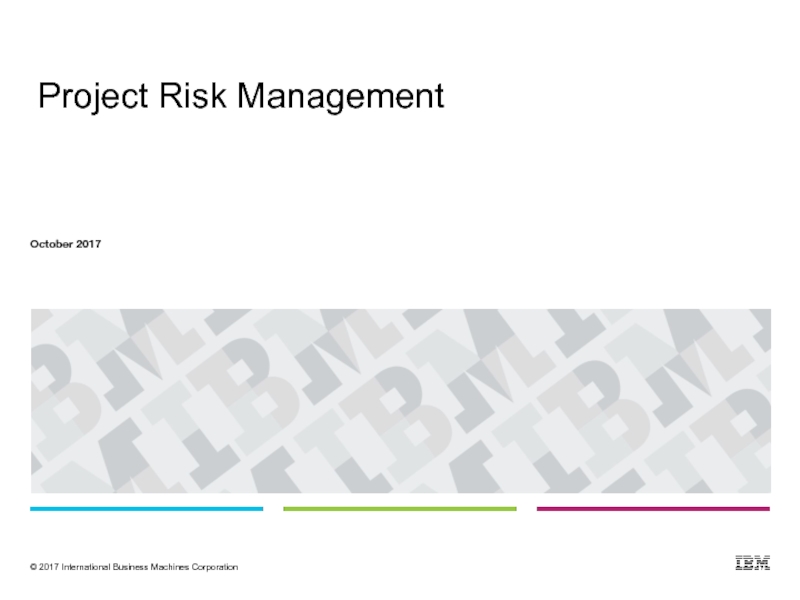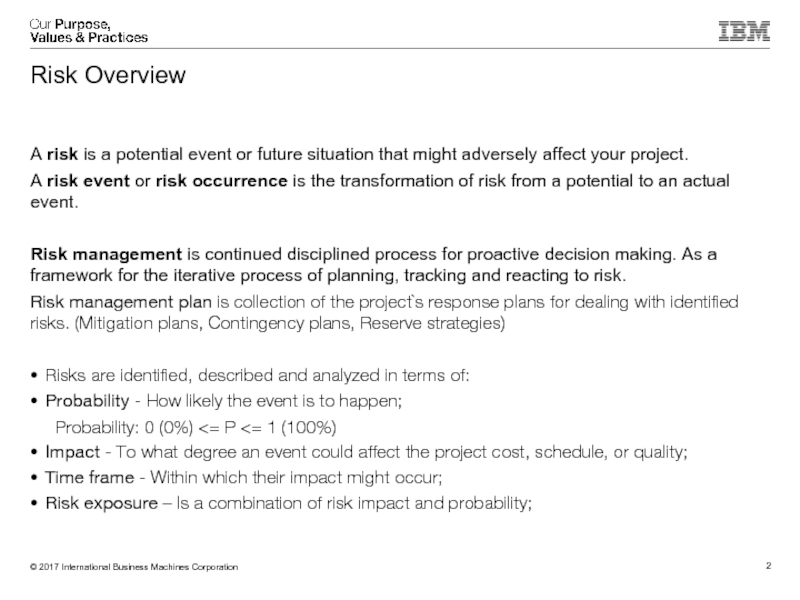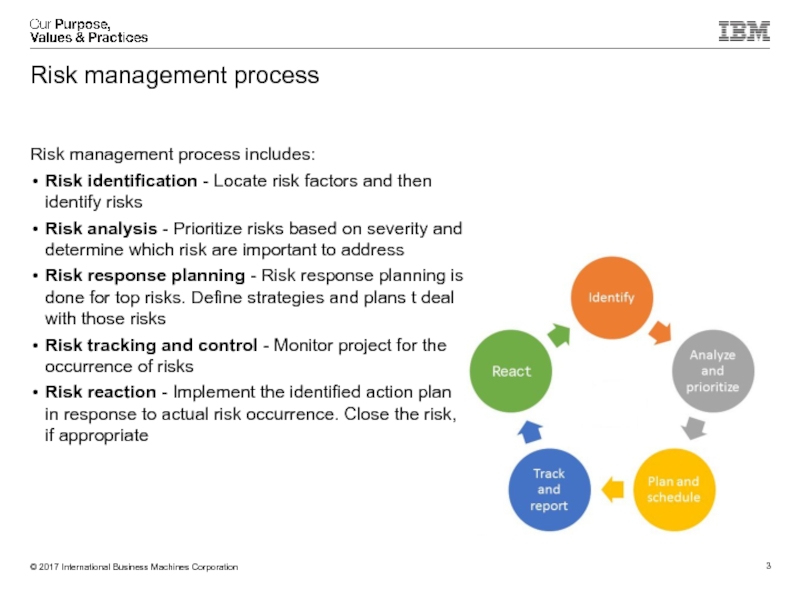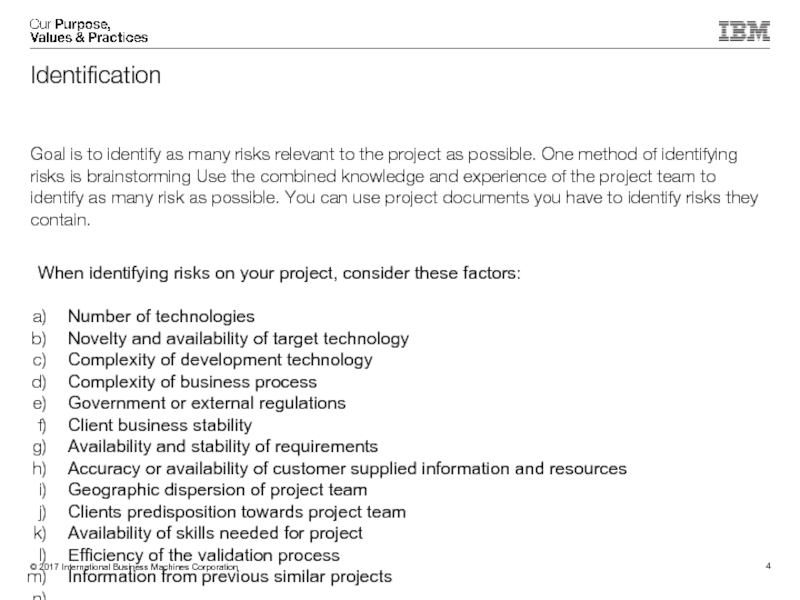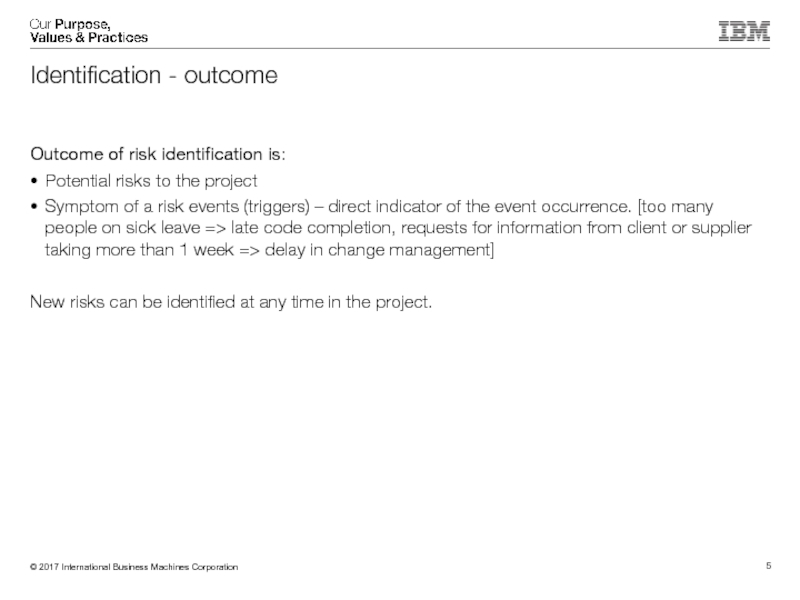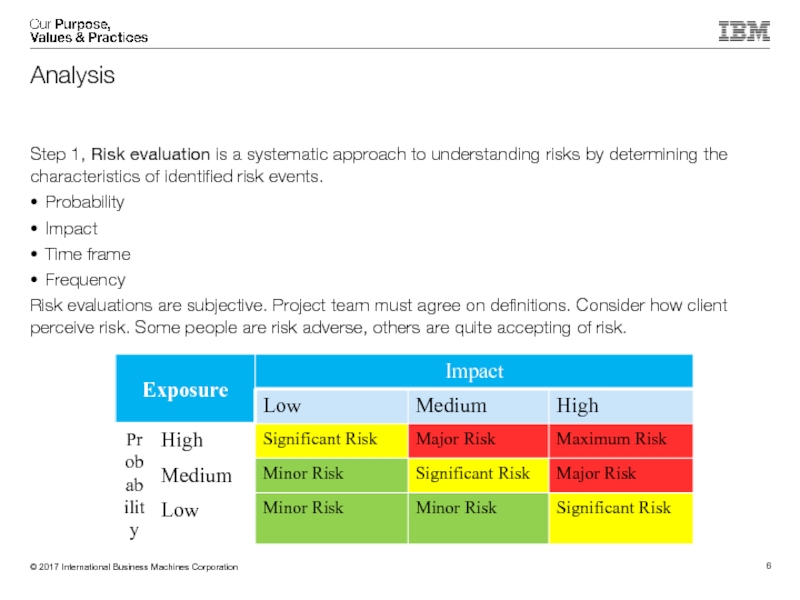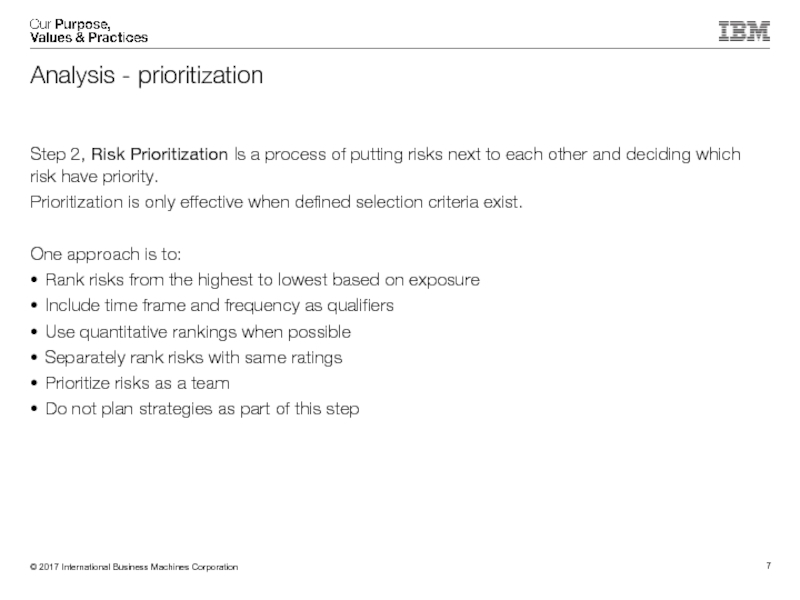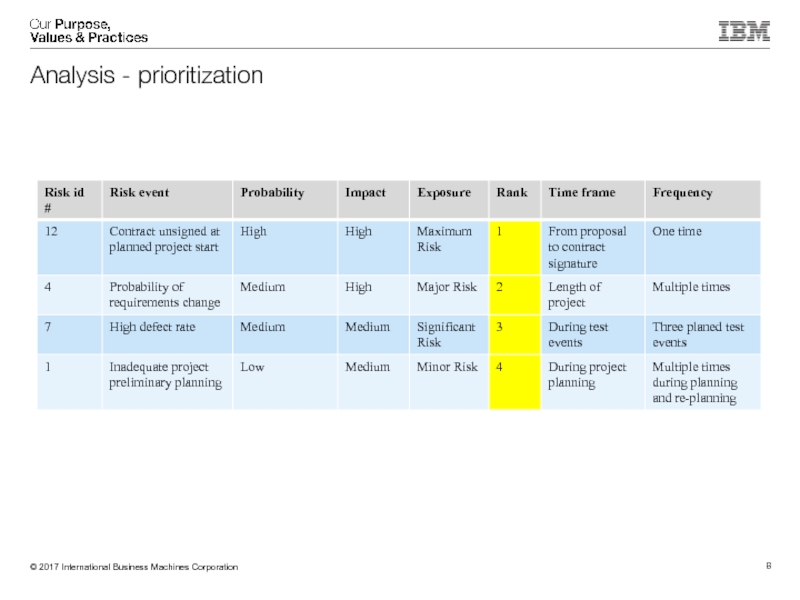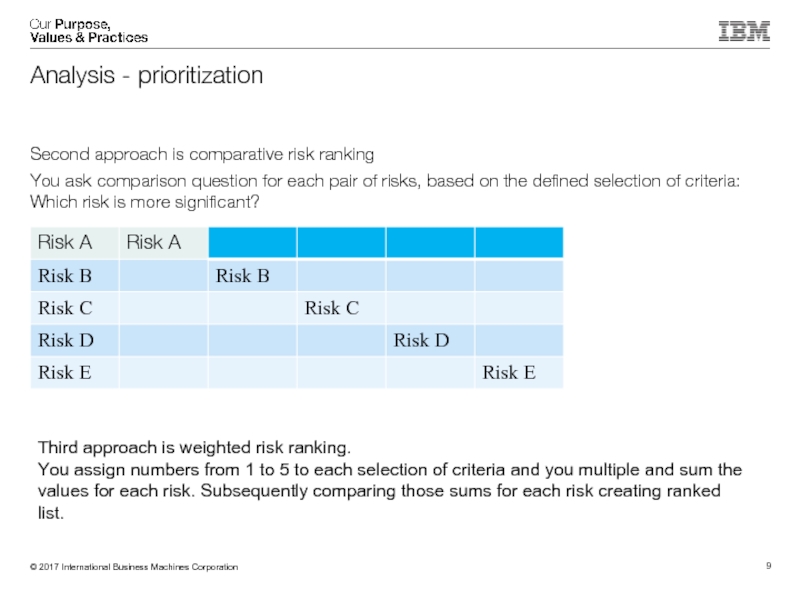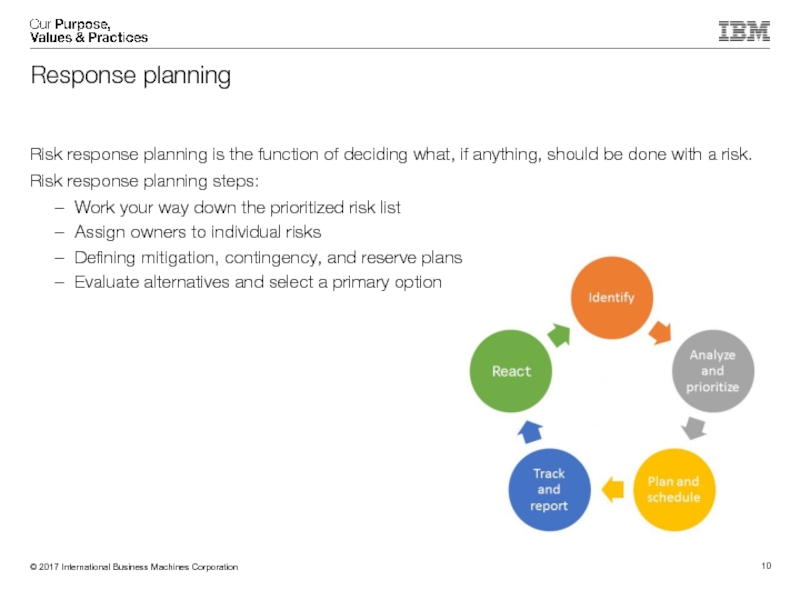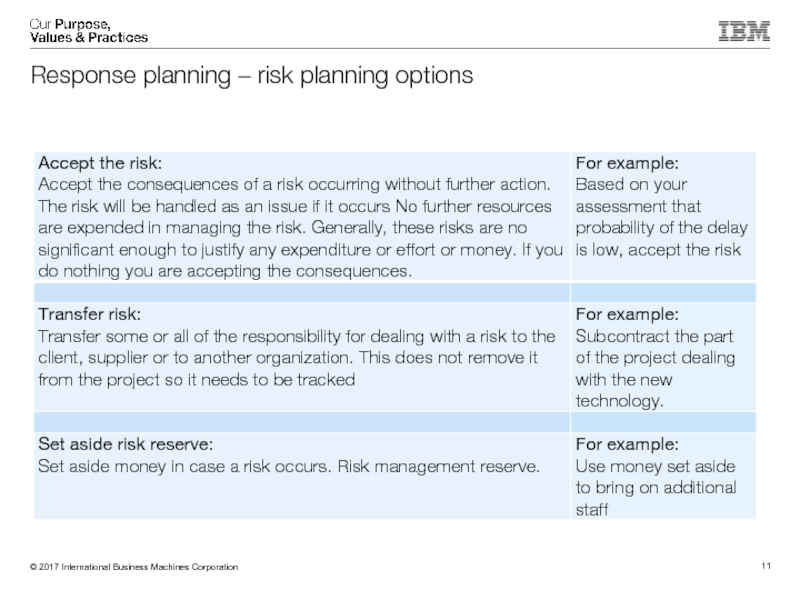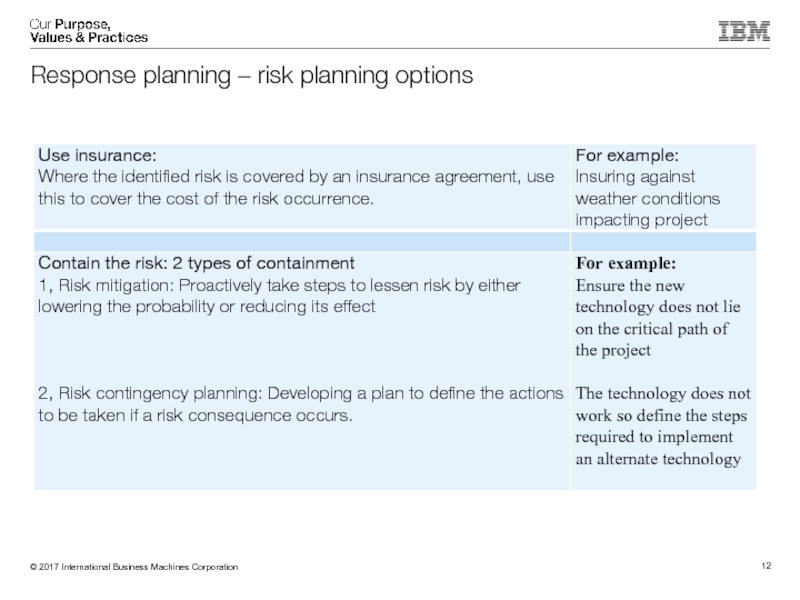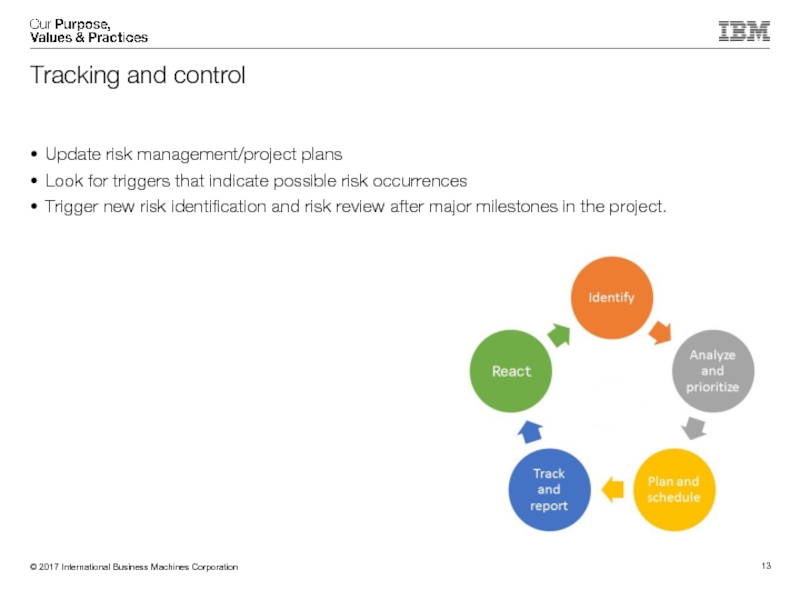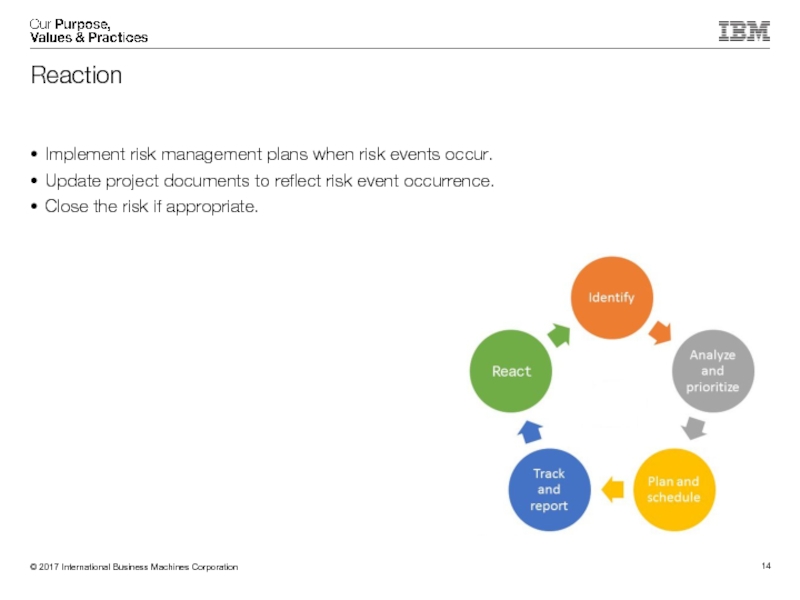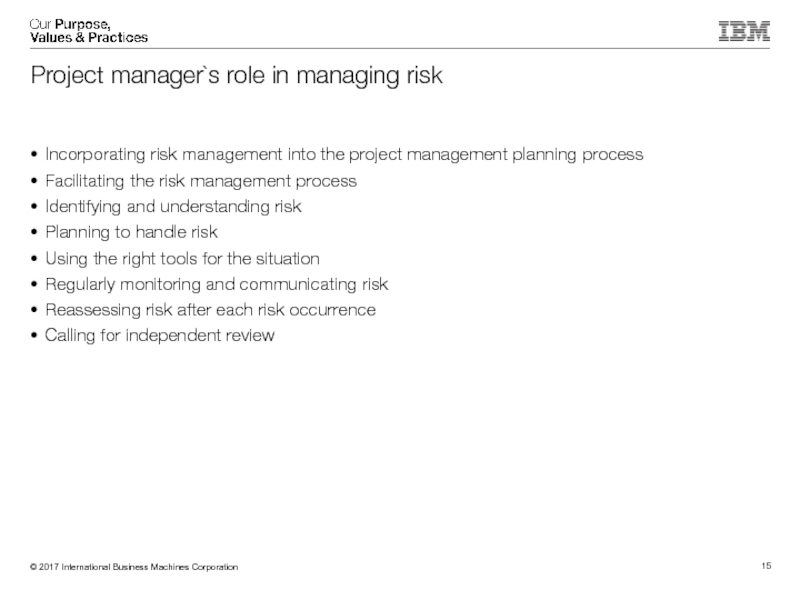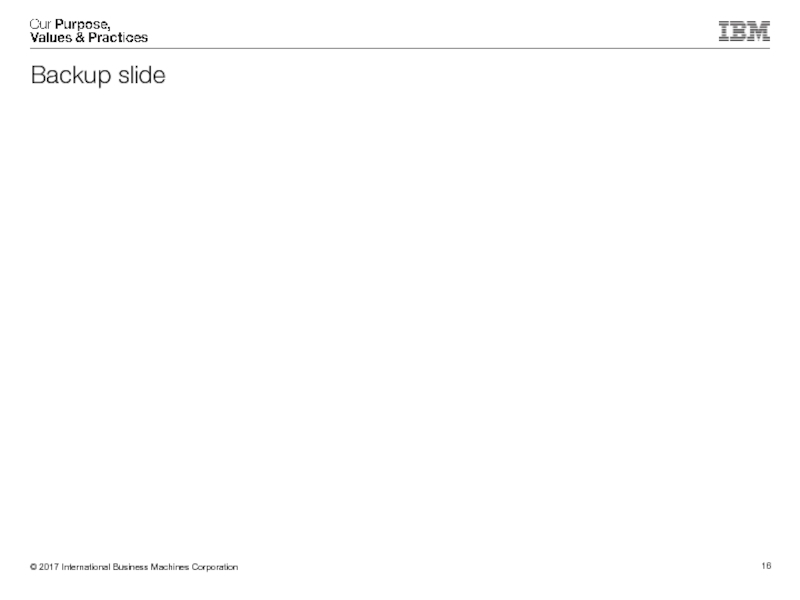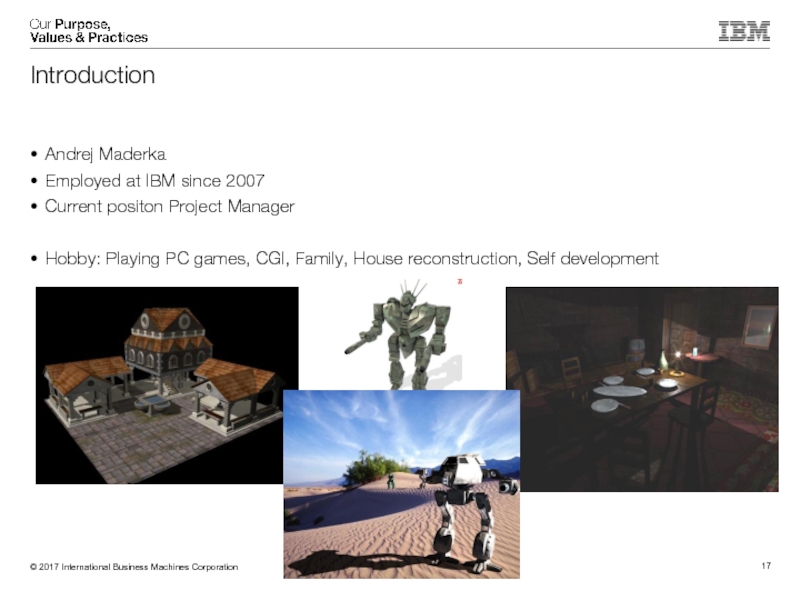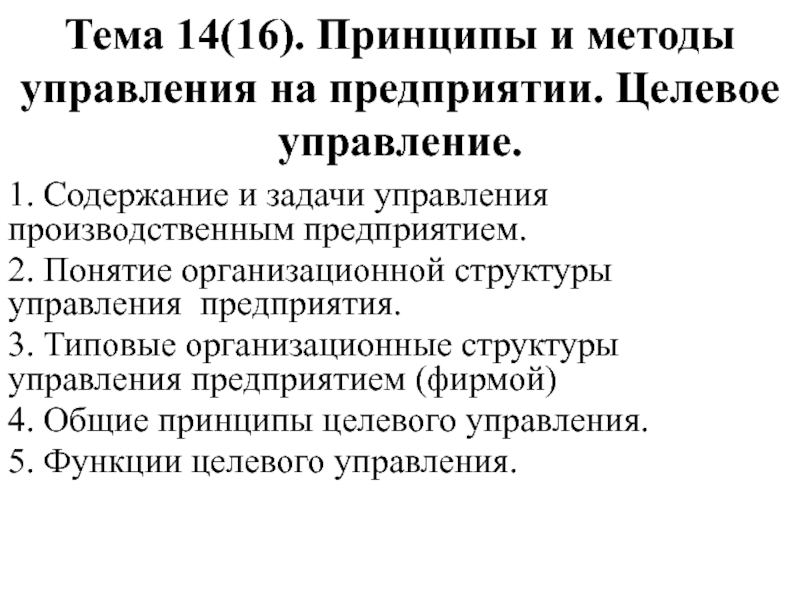- Главная
- Разное
- Дизайн
- Бизнес и предпринимательство
- Аналитика
- Образование
- Развлечения
- Красота и здоровье
- Финансы
- Государство
- Путешествия
- Спорт
- Недвижимость
- Армия
- Графика
- Культурология
- Еда и кулинария
- Лингвистика
- Английский язык
- Астрономия
- Алгебра
- Биология
- География
- Детские презентации
- Информатика
- История
- Литература
- Маркетинг
- Математика
- Медицина
- Менеджмент
- Музыка
- МХК
- Немецкий язык
- ОБЖ
- Обществознание
- Окружающий мир
- Педагогика
- Русский язык
- Технология
- Физика
- Философия
- Химия
- Шаблоны, картинки для презентаций
- Экология
- Экономика
- Юриспруденция
Project risk management презентация
Содержание
- 1. Project risk management
- 2. Risk Overview A risk is a potential
- 3. Risk management process includes: Risk identification -
- 4. Goal is to identify as many risks
- 5. Outcome of risk identification is: Potential risks
- 6. Step 1, Risk evaluation is a systematic
- 7. Step 2, Risk Prioritization Is a process
- 8. Analysis - prioritization
- 9. Second approach is comparative risk ranking You
- 10. Risk response planning is the function of
- 11. Response planning – risk planning options
- 12. Response planning – risk planning options
- 13. Update risk management/project plans Look for triggers
- 14. Implement risk management plans when risk events
- 15. Incorporating risk management into the project management
- 16. Backup slide
- 17. Andrej Maderka Employed at IBM since 2007
Слайд 2Risk Overview
A risk is a potential event or future situation that
A risk event or risk occurrence is the transformation of risk from a potential to an actual event.
Risk management is continued disciplined process for proactive decision making. As a framework for the iterative process of planning, tracking and reacting to risk.
Risk management plan is collection of the project`s response plans for dealing with identified risks. (Mitigation plans, Contingency plans, Reserve strategies)
Risks are identified, described and analyzed in terms of:
Probability - How likely the event is to happen;
Probability: 0 (0%) <= P <= 1 (100%)
Impact - To what degree an event could affect the project cost, schedule, or quality;
Time frame - Within which their impact might occur;
Risk exposure – Is a combination of risk impact and probability;
Слайд 3Risk management process includes:
Risk identification - Locate risk factors and then
Risk analysis - Prioritize risks based on severity and determine which risk are important to address
Risk response planning - Risk response planning is done for top risks. Define strategies and plans t deal with those risks
Risk tracking and control - Monitor project for the occurrence of risks
Risk reaction - Implement the identified action plan in response to actual risk occurrence. Close the risk, if appropriate
Risk management process
Слайд 4Goal is to identify as many risks relevant to the project
Identification
When identifying risks on your project, consider these factors:
Number of technologies
Novelty and availability of target technology
Complexity of development technology
Complexity of business process
Government or external regulations
Client business stability
Availability and stability of requirements
Accuracy or availability of customer supplied information and resources
Geographic dispersion of project team
Clients predisposition towards project team
Availability of skills needed for project
Efficiency of the validation process
Information from previous similar projects
…
Слайд 5Outcome of risk identification is:
Potential risks to the project
Symptom of a
New risks can be identified at any time in the project.
Identification - outcome
Слайд 6Step 1, Risk evaluation is a systematic approach to understanding risks
Probability
Impact
Time frame
Frequency
Risk evaluations are subjective. Project team must agree on definitions. Consider how client perceive risk. Some people are risk adverse, others are quite accepting of risk.
Analysis
Слайд 7Step 2, Risk Prioritization Is a process of putting risks next
Prioritization is only effective when defined selection criteria exist.
One approach is to:
Rank risks from the highest to lowest based on exposure
Include time frame and frequency as qualifiers
Use quantitative rankings when possible
Separately rank risks with same ratings
Prioritize risks as a team
Do not plan strategies as part of this step
Analysis - prioritization
Слайд 9Second approach is comparative risk ranking
You ask comparison question for each
Analysis - prioritization
Third approach is weighted risk ranking.
You assign numbers from 1 to 5 to each selection of criteria and you multiple and sum the values for each risk. Subsequently comparing those sums for each risk creating ranked list.
Слайд 10Risk response planning is the function of deciding what, if anything,
Risk response planning steps:
Work your way down the prioritized risk list
Assign owners to individual risks
Defining mitigation, contingency, and reserve plans
Evaluate alternatives and select a primary option
Response planning
Слайд 13Update risk management/project plans
Look for triggers that indicate possible risk occurrences
Trigger
Tracking and control
Слайд 14Implement risk management plans when risk events occur.
Update project documents to
Close the risk if appropriate.
Reaction
Слайд 15Incorporating risk management into the project management planning process
Facilitating the risk
Identifying and understanding risk
Planning to handle risk
Using the right tools for the situation
Regularly monitoring and communicating risk
Reassessing risk after each risk occurrence
Calling for independent review
Project manager`s role in managing risk
Слайд 17Andrej Maderka
Employed at IBM since 2007
Current positon Project Manager
Hobby: Playing PC
Introduction
